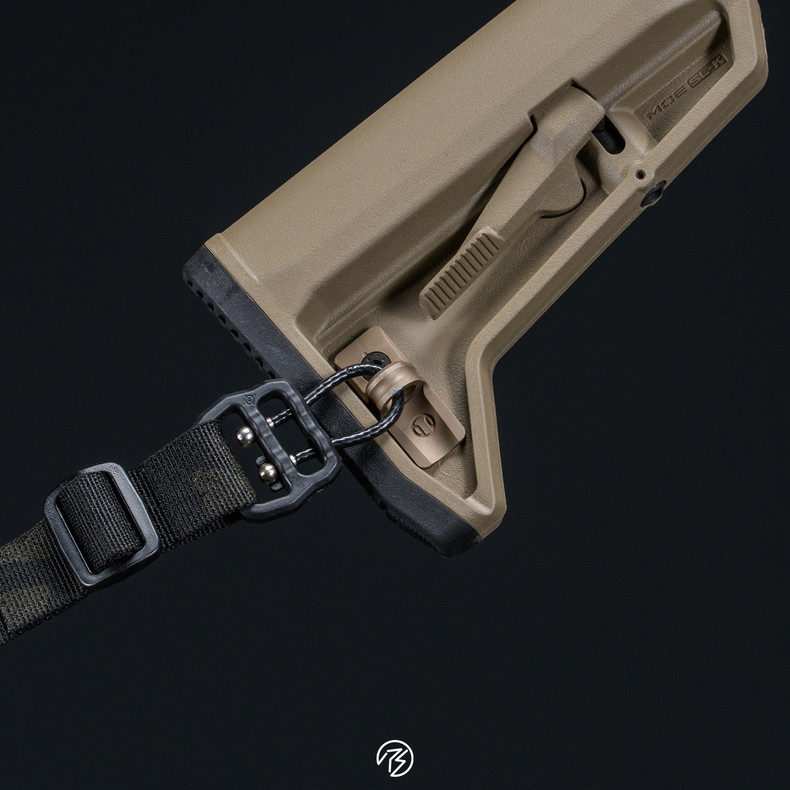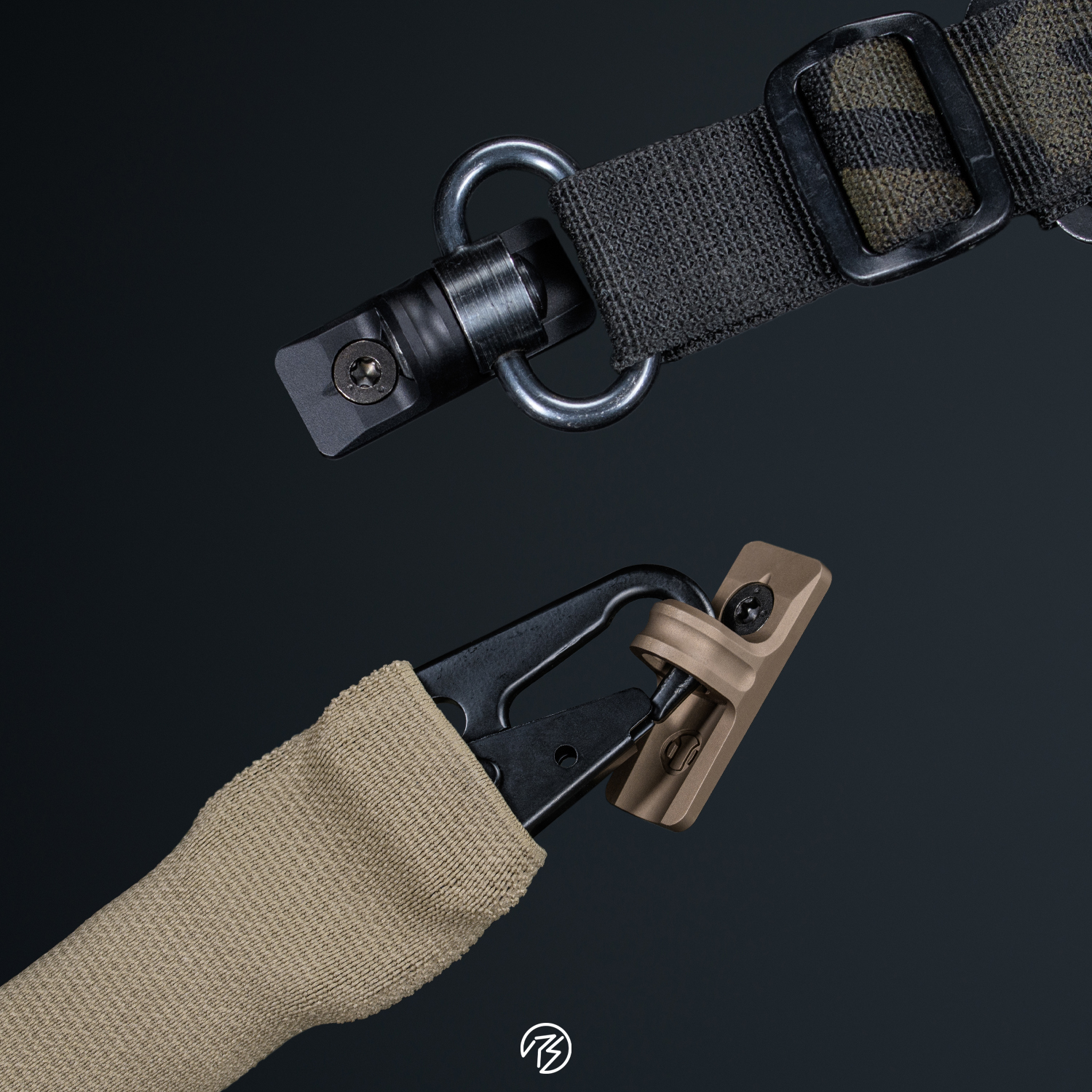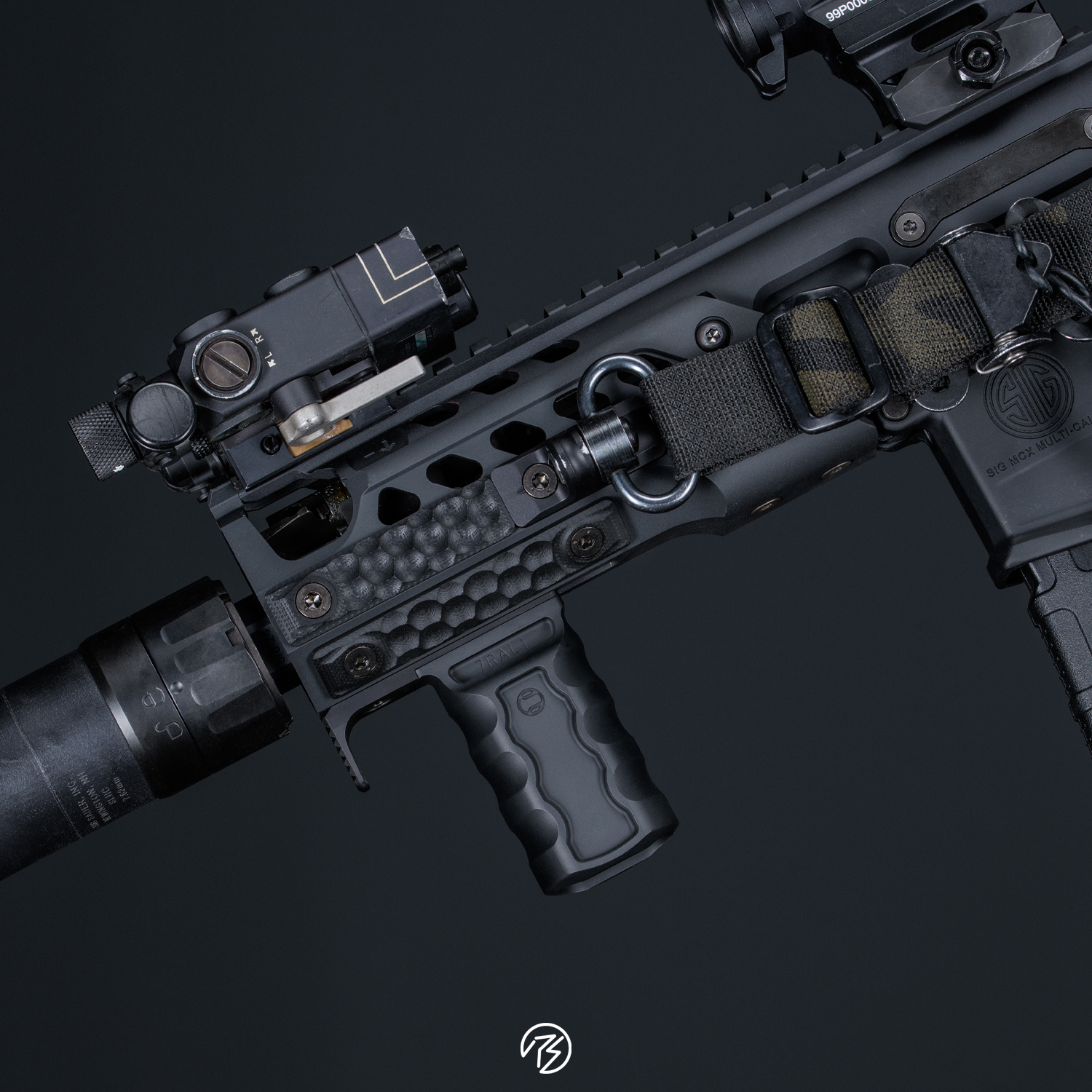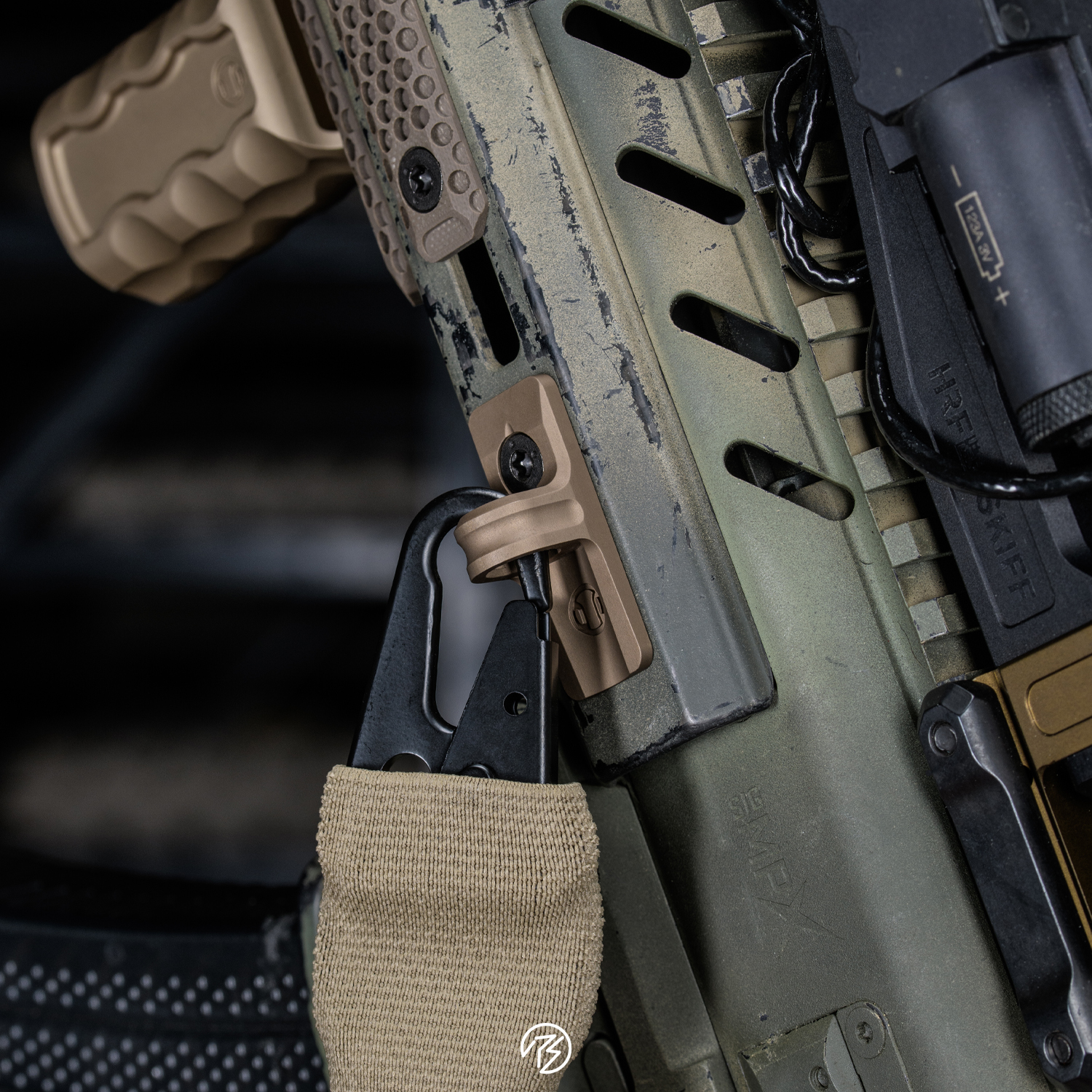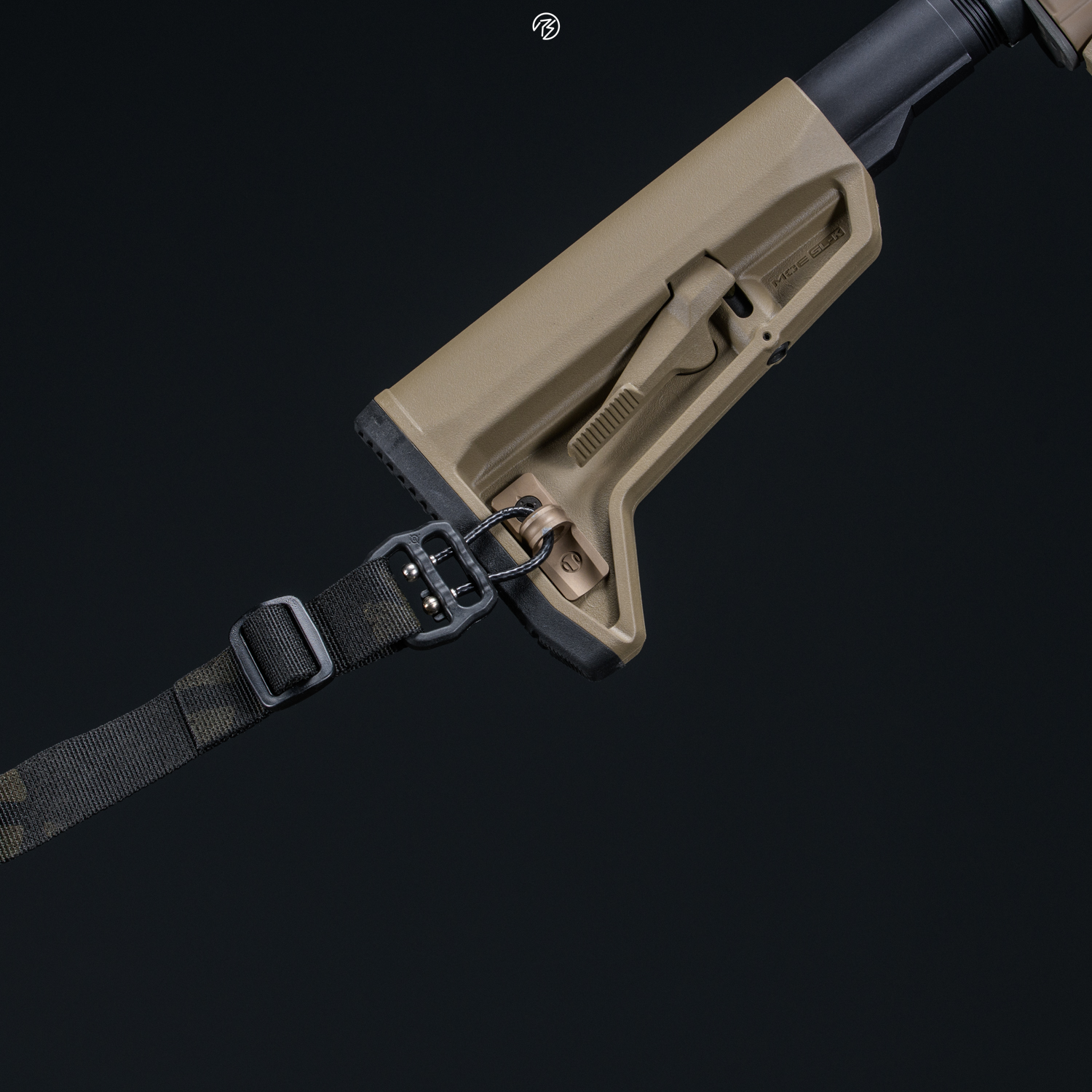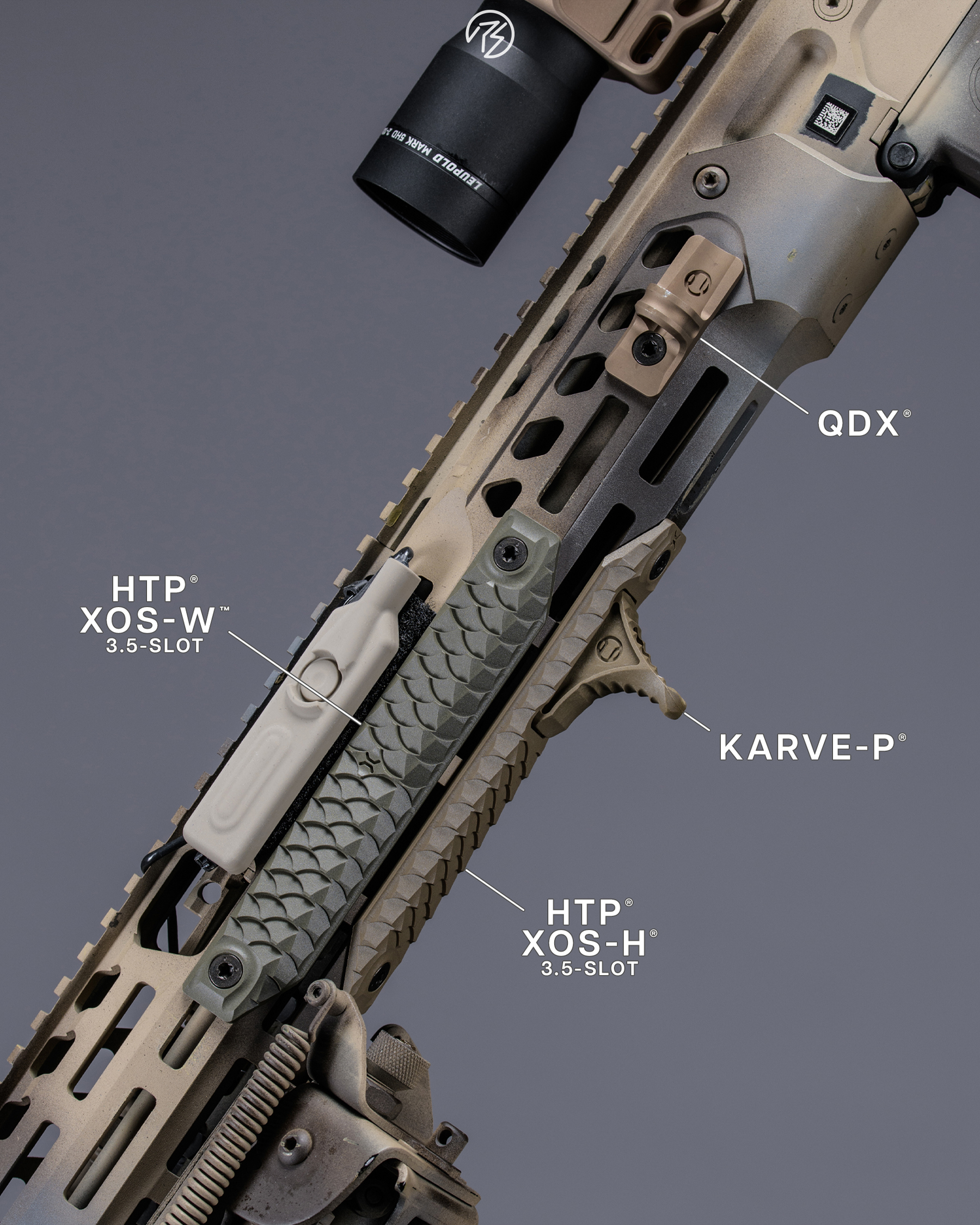So, you now have your AR-15. Trying to figure out the best AR15 sling type is on your docket. You've been dreaming of owning an AR-15 gun for a while. You understand the many benefits of owning an AR-15, from the versatility of its uses to its accuracy, low recoil, and its ability to be customized to suit your needs. Speaking of customizing your AR, now you're ready to begin. While you've been looking at sights, handguard rails stocks, and foregrips, one AR-15 accessory you should not overlook is the sling.
RailScales makes the best AR-15 accessories in 2024, from MLOK rail covers to foregrips. In addition, we offer DBAL Sights, handstops, and vertical grips. We use G10, which is a composite material made of fiberglass laminate, to make our textured grip panels. Our rail covers provide protection from the heat of your barrel from firing and are easy to install. Below, we'll take a look at the types of AR-15 slings available. Browse all of our AR-15 foregrips today!
TYPES OF AR-15 SLINGS
Various types of AR-15 slings cater to different needs and preferences, including two-point slings for stability and accessibility, single-point slings for maximum mobility, three-point slings for versatility, convertible/multi-point slings for adaptable configurations, padded/comfort slings for extended use, quick-adjust slings for on-the-fly adjustments, bungee slings for shock absorption, tactical slings with quick-detach features for military and law enforcement use, and precision rifle slings tailored for long-range shooting. Considerations such as intended use, comfort, ease of adjustment, and durability are vital in selecting the most suitable sling for individual needs. Learn more about the most popular AR 15 slings below.
One-Point AR-15 Sling
The AR-15 slings are quite popular amongst AR owners — and for good reason. One-point slings allow the user to carry their AR-15 hands-free, so they will have them free to walk, grab onto objects, or to grab a pistol. The sling hangs in front of the user with the barrel pointed towards the ground. The clip is attached at the butt, or end, of your rifle. You can move quickly while using this sling and you can easily shoot from either your right or left shoulder if need be. This is a very comfortable AR-15 sling, especially for beginner shooters. However, the barrel can end up hitting you while walking, and this sling offers no additional shooting support.
Two-Point AR-15 Sling
This type of sling features attachments to the barrel and the stock of your AR-15 so that you can easily carry it on your back. No mold was broken designing this type of sling; the design has been around almost since rifles were first invented. The main difference between modern two-point AR slings and those of yesteryear is the design of the hold. Your AR-15 will hang in front of you, and the barrel will point towards the ground in a safe carry position. The stock will be by your dominant shoulder, which affords a quicker placement when you need to fire. The drawback of this type of AR-15 sling is that the extra AR part point makes switching from shoulder to shoulder a bit more clumsy. However, with practice, this can be overcome.
Three-Point AR-15 Sling
If you are looking for a sling to use with retention while on the move, this AR sling is for you. It combines the features of the one-point sling with those of the two-point sling. It features a loop that you put your head and arm through, as well as a loop that connects to the stock of your rifle. The loop has a strap that then attaches to the front of your AR-15. However, due to the extra material involved in the three-point sling, people have had problems transitioning it to fire. The loop can get hung up on the bolt release, block the ejection port, or get tangled around the shooter themselves. If you go with a three-point AR sling, the best advice is to spend a lot of time practicing in the field in order to avoid these hang-ups.
Ching Sling
A Ching sling is another three-point sling. This one connects at one point near the stock of the gun and then there are two connecting points near the handguards on the barrel of the gun. This attachment configuration allows you to carry your AR-15 over your shoulder, or like a two-point, which is at your side. You can pull your AR15 tight into your shoulder by putting your arm through the loop between the first and second studs.
Cuff Sling
Designed with the marksman in mind, a Cuff sling is a two-point sling, but with an extra bit of material that the shooter can loop around the upper part of their arm. When used while firing, the tension is increased, and there are no extra straps or connection points to get in the way.
Choosing The Right AR15 Sling For You
When choosing a sling, it ultimately comes down to your use and your preferred style of carry. When you are building the perfect AR-15 upper rail, the sling choice matters! The single-point sling is most definitely the simplest. The two-point sling is great for mobility, such as for hunting when you are walking with your gun for quite a while. The Ching or Cuff sling works well for long-range shooters who are looking for accuracy.
You'll also want to consider the material, too. You'll want a lot of padding if you are walking or hiking with your AR-15 to avoid chafing. Leather is a great material, but it can stretch over time. Nylon is a light material, but may not be comfortable.
Browse The Best AR-15 Slings and AR Accessories
As you can see, you'll need some sort of sling so you can carry your AR while hiking, hunting, or target shooting without fatigue. Even though the AR-15 is lightweight, it still weighs between six and seven pounds unloaded. You throw in iron sights, a vertical fore grip, and more, and you'll have a gun you most definitely will need help carrying. Consider a sling for your AR-15 to make field work even more enjoyable.
Besides offering the best rail covers made from the strongest material on the market and handstops, RailScales also offers our QDX™ MLOK Sling Mount, which is made out of 7075-T6 Aluminum with a Type 03 Hardcoat Anodizing. This is lightweight and low-profile, making it ideal as an AR accessory.
RailScales continues to make the best AR parts in 2024. We threw away the mold when we began our family-owned company back in 2014 and started over. Our AR-15 foregrips offer heat protection, add a superior grip, and are extremely thin so you hardly know they are there. They come in many colors and styles for you to choose from to match your firearm, and they come in different lengths for true customization. Easy to install, you'll wonder how you shot your AR before RailScales.
Our Karve® handstops also break the mold. These are textured as well for a superior grip. They are simple, light, and great for ergonomics. You'll love the feel of these handstops and will soon find yourself putting them on all of your ARs.
If you are looking for the highest quality AR-15 accessories along with the best customer service. Looking to revamp your AR-15? Order our rail covers, handstops, and sling mounts today!
Frequently Asked Questions (FAQs)
Q: Can I use a one-point sling for long-distance hiking with my AR-15? A: While a one-point sling offers great maneuverability, it may not be the most comfortable for long-distance hiking due to the rifle's movement. A padded two-point sling might be a better option for such activities.
Q: How do I adjust a two-point sling for shooting support? A: To use a two-point sling for shooting support, shorten the sling to pull the rifle snug against your shoulder. This tension can help stabilize your shooting stance. Practice adjusting the length for quick transitions between carrying and shooting.
Q: Will a three-point sling fit all AR-15 models? A: Three-point slings are generally adaptable to most AR-15 models. However, due to their complex setup, ensure the sling does not interfere with the rifle's operational parts. Compatibility may vary based on your rifle's specific configuration and accessories.
Q: Is a Ching Sling suitable for tactical operations? A: The Ching sling is designed more for stability in precision shooting rather than quick tactical movements. For tactical scenarios, a one-point or two-point sling might offer better speed and flexibility.
Q: Can I use a cuff sling on a rifle other than an AR-15? A: Yes, cuff slings can be adapted to various rifles, not just AR-15s. They are particularly useful for any firearm used in precision shooting, as the cuff sling aids in stabilizing the rifle against your shoulder.

